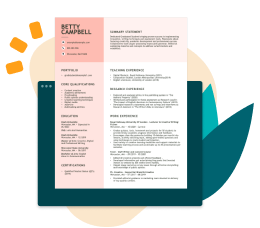1 in 3 U.S. Workers Hesitant to Take Vacation Due to Layoff Fears
As summer approaches, many U.S. workers are feeling conflicted about taking time off. A new survey of more than 1,000 currently employed adults reveals that economic uncertainty and job insecurity are reshaping how—and whether—people plan to use their vacation days, even as burnout remains widespread. The findings offer a timely look at how employees are approaching time off amid ongoing layoffs and a softening economy.
Key findings:
- Layoff fears are disrupting PTO: 29% say job insecurity is making them more hesitant to take time off this summer.
- Fear of being viewed as expendable: 10% worry that taking vacation could make them a target for layoffs.
- Pressure to stay available: 19% say they feel they need to be constantly available at work due to layoff concerns.
- Many still plan to use PTO, but feel conflicted: 23% say they’re concerned about negative perceptions of taking time off but are planning to do so anyway.
Layoff Anxiety Is Disrupting Vacation Plans
The report found that labor market uncertainty has caused the workforce to be more hesitant to use their earned vacation:
- 29% say layoffs and the poor job market are making them more hesitant to take time off this summer.
- An additional 23% are also concerned about layoffs but apprehensively moving forward with vacation plans.
Economic Pressures Add to the Hesitation
While layoff anxiety is a leading concern, financial pressures are also shaping PTO plans:
- Among those hesitant to take time off, 73% cite financial concerns.
- 48% report feeling more cautious about PTO due to a weakening economy.
Overall, nearly half (47%) of U.S. workers polled are unsure or not planning to take a vacation this summer.
Burnout Is Widespread, but Recovery Feels Risky
Despite these fears, the data shows that workers are in real need of rest. A staggering 86% report experiencing some level of stress or burnout, and more than a quarter (26%) say they feel emotionally drained multiple times per week.
- 30% report moderate to severe burnout.
- 77% feel stressed at work on a regular basis.
- 28% feel emotionally drained multiple times a week or more.
Many Workers Can’t Disconnect
Even While on Vacation
Burnout, layoff fears, and pressure to stay productive are preventing employees from fully stepping away from work—even during their time off.
When asked how confident they are in completely unplugging during vacation, only half of workers said they feel they’ll be able to disconnect.
The rest expect to stay at least somewhat connected to work:
- 34% are somewhat confident but expect to check emails occasionally.
- 12% are not very confident and anticipate doing some work.
- 5% are not confident at all and say they will definitely work while on PTO.
This means nearly one in two employees are likely to stay connected to work while on vacation, undermining the restorative benefits of time off.
Fear of layoffs and growing job insecurity are leading many employees to deprioritize their well-being. When workers hold back from using the PTO they’ve earned, it can take a serious toll on mental health, reduce productivity, and diminish overall engagement in the workplace.
For workers feeling concerned about job stability, taking proactive steps like updating their resume, brushing up on key skills, and growing a professional network helps build confidence. Even simple career prep can ease anxiety when the future feels uncertain.
For press inquiries, contact Elizabeth Buccianti, senior manager public relations, at elizabeth.buccianti@bold.com.
Methodology
The findings presented in this report are based on a nationally representative survey conducted by LiveCareer using Pollfish on May 7, 2025. The survey collected responses from 1,007 U.S. workers currently employed and explored their experiences with burnout, upcoming vacation plans, feelings on the economy and labor market, and barriers to taking vacation. They answered different types of questions, including yes/no, open-ended, scale-based questions where respondents indicated their level of agreement with statements, and multiple-choice where they could select from a list of provided options. Participants represented a broad cross-section of the working population in terms of gender and age. The sample included 53.62% male respondents (540) and 45.98% female respondents (463). Age-wise, the distribution was also balanced: 18.87% were aged 18–27 (Gen Z), 27.21% were aged 28–43 (Millennials), 27.11% were aged 44–60 (Gen X), and 26.81% were aged 61–79 (Baby Boomers). All participants were screened to ensure they were currently residing in the U.S. and actively employed at the time of the survey. The data collection adhered to Pollfish’s quality control standards to ensure the accuracy and reliability of the results.
About LiveCareer
LiveCareer's online Resume Builder is designed to empower its users to get better jobs and improve their job search. A one-stop shop among AI resume builder tools, LiveCareer features cutting-edge resume templates, a powerful cover letter builder, and extensive free career resources to support job candidates in reaching their professional goals. Trusted by over 10 million users around the world, LiveCareer has been publishing expert advice from Certified Professional Resume Writers since 2005. LiveCareer’s career tips have been featured in renowned media outlets, including Bloomberg, Forbes, and Newsweek. Stay connected with LiveCareer's latest updates to improve your job search on Facebook, Instagram, LinkedIn, and X.






